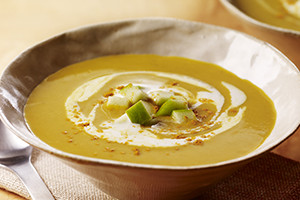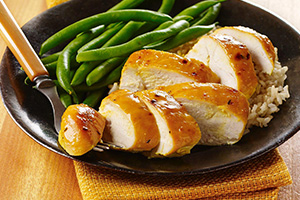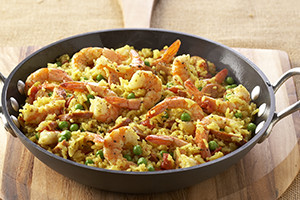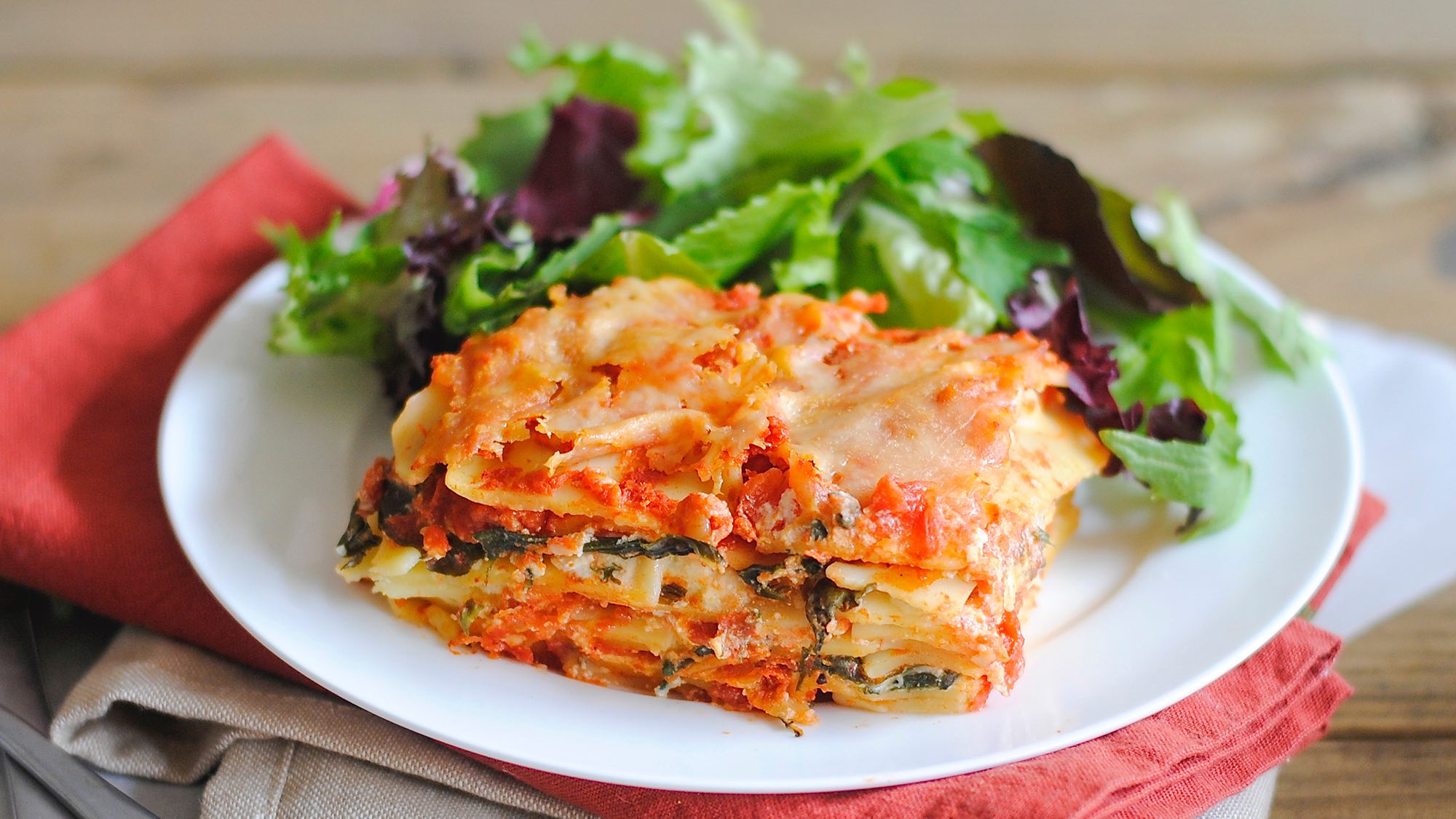Flavor Profile
Turmeric’s vivid orange color, sharp flavor and subtle citrusy aroma are the power behind curry powder, mustard, pickles and spicy meat, fish, vegetable and rice dishes. In the fields where it grows, the turmeric plant hides its brilliant color underground, showing only glossy green leaves and multi-petaled white flowers. But dig up the root, carefully clean and dry it, and you have an extraordinary spice beloved as much for its color as its flavor. This member of the ginger family is a common ingredient in spice blends from the Caribbean, India, Indonesia, the Middle East and North Africa. In the bottle, it should smell earthy with a touch of ginger, and have consistent, bright yellow-orange color.
Usage
- Turmeric is the primary coloring and an essential earthy flavor in Indian and Indonesian curries. It’s also a mainstay of commercially prepared curry powder. Use it to add vivid yellow-orange color and a subtle citrusy aroma to curries and stews. Around the globe, cooks use turmeric for color and flavor in stews. Moroccans, for example, use it—along with a potful of other spices—in the slow-cooked meat and vegetable stews called tagines. We love how the broth colors the couscous that accompanies this dish.
- Homemade pickles and relishes are a natural for turmeric. For refrigerator dill pickles, bread and butter pickles, pickled cauliflower, and corn and bell pepper relish, add a pinch or two of turmeric for appealing color.
Perfect Partners
- It’s fun and easy to make your own mustard. Use powdered mustard or mustard seed, turmeric for color and your favorite herbs for flavoring. We love tarragon and white wine as additions to whole grain mustard made with mustard seed.
- Turmeric is a colorful addition to Thai, Indian and Persian marinades for chicken. Try mixing it with Dijon mustard, honey, thyme leaves and yogurt. Marinate the chicken, then grill or bake. It couldn’t be easier—or tastier!
- Turmeric and coconut milk play well together. Whether in curries, smoothies or soups, it reinforces the tropical appeal of coconut milk. Thai chicken or shrimp coconut soup, anyone?
Substitutes
Q: If I don’t have turmeric on hand, what makes a good substitute?
A: Turmeric is used more for its color than its flavor. Sweet paprika has a bit more flavor, but its rosy red color can stand in nicely for turmeric’s yellow-orange. Use it in equal measure.
History/Fun Facts
Europeans were latecomers to turmeric’s charms. It wasn’t until the 13th century that Italian explorer Marco Polo encountered turmeric in China and brought it home. He admired its similarity to the color of saffron, the vibrant—and wildly expensive—stamens of the crocus flower. But turmeric already had a long history in Asia, both as a dye and a spice. Today, turmeric colors many things, from curries, mustard and pickles to silk and cotton, including the beautiful “saffron” colored robes of Hindu monks.
Popular Recipe Recommendations
Refrigerator Dill Pickle Slices
Creamy Coconut Butternut Squash Soup
Honey Mustard Turmeric Chicken












